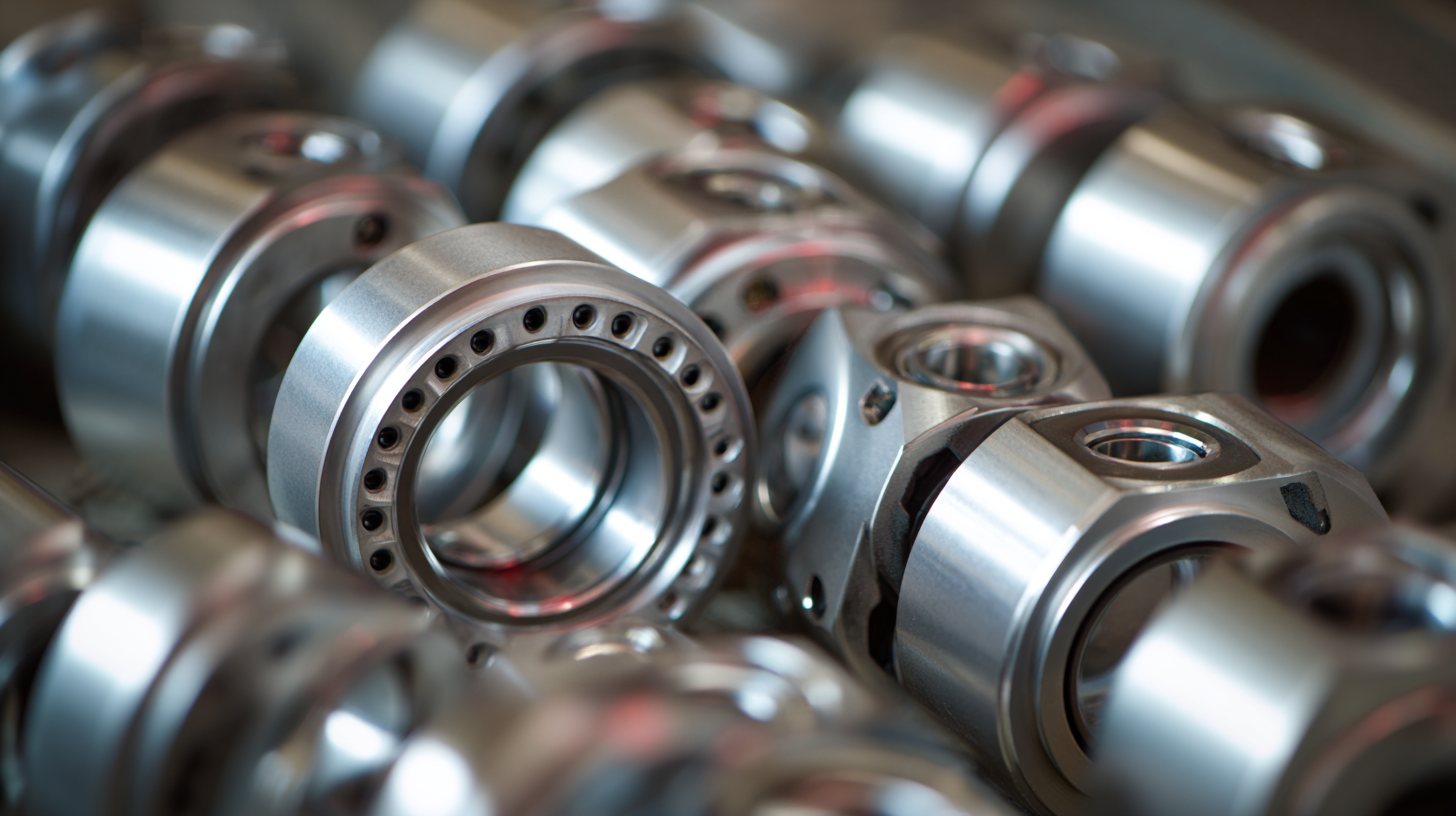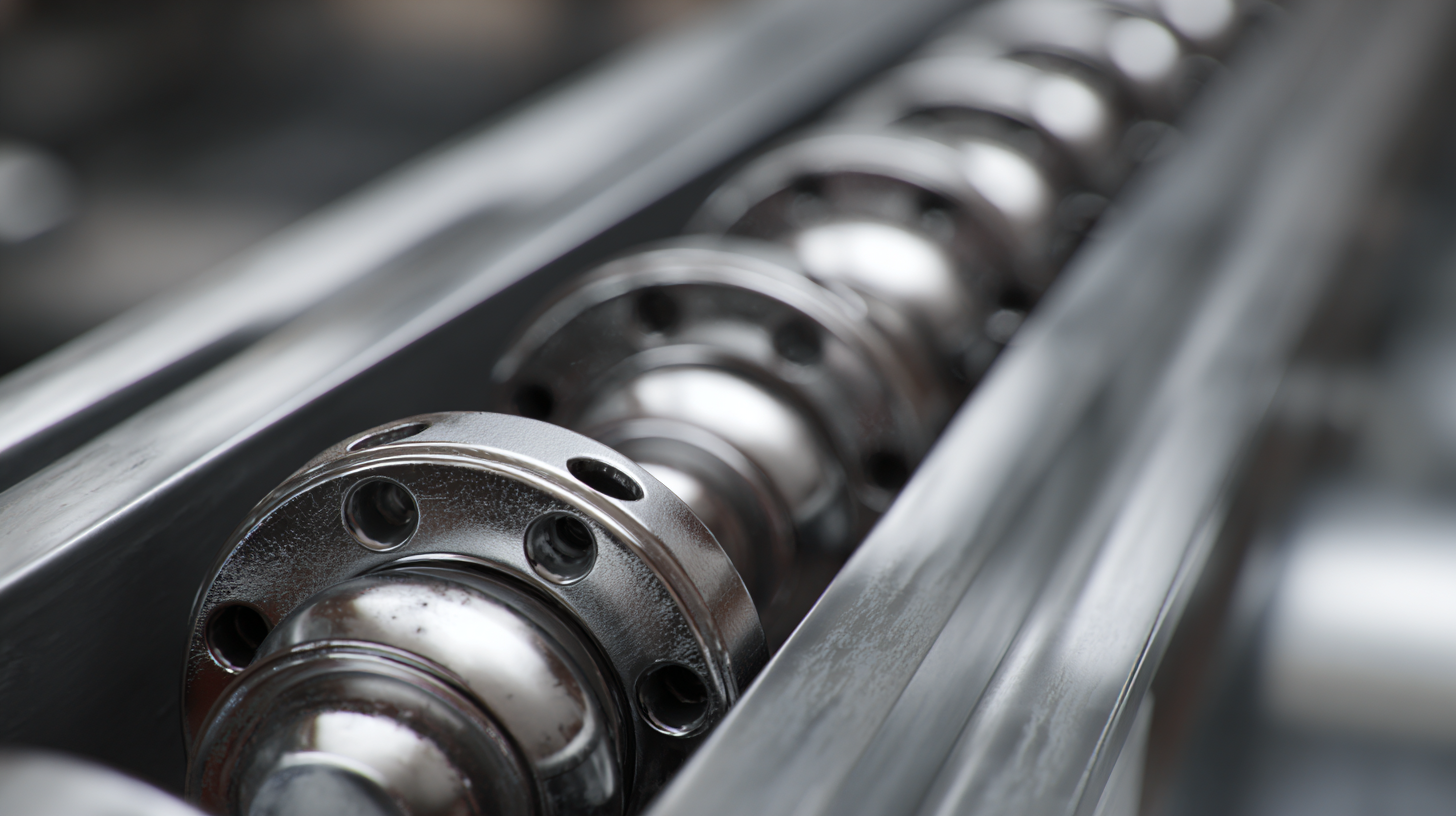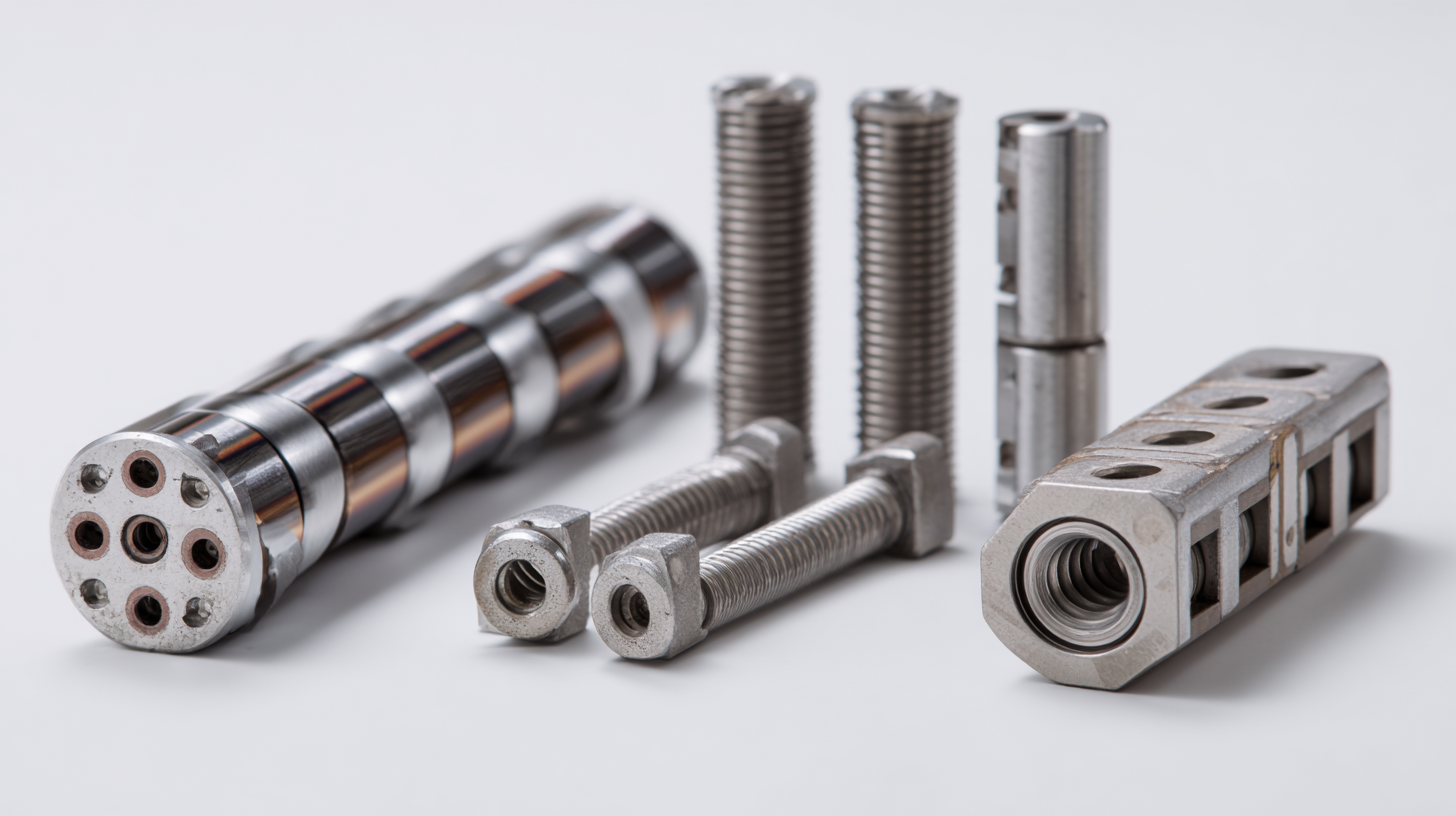Innovative Trends in Linear Motion Bearings for 2025 and Beyond
As we look towards 2025 and beyond, the landscape of
linear motion bearings is poised for transformative
innovations that promise to enhance performance, efficiency, and
sustainability. In an era where precision and reliability are paramount, the demand
for high-quality bearings is surging, particularly in industries that rely on robust
automation and advanced machinery. This surge has led to an increasing interest in
Linear Motion Bearings Bulk Order, allowing manufacturers to
meet the growing requirements of various applications without compromising on quality.
Moreover, with China's competitive manufacturing capabilities,
it is crucial to explore how these advancements will shape the future of linear motion systems,
driving technological progress and setting new standards for excellence. Join us as we delve into
the latest trends that not only underline the importance of linear motion bearings but also highlight
the innovative strategies shaping
this essential sector.
Emerging Technologies Shaping Linear Motion Bearings for Future Applications
The landscape of linear motion bearings is poised for transformation as emerging technologies pave the way for innovative applications in various industries. According to a report by ResearchAndMarkets, the global linear motion bearings market is projected to reach $10.24 billion by 2025, growing at a CAGR of 5.4% from 2020. This growth is driven by advancements in automation and robotics, where precision and reliability of bearings are crucial. Technologies such as smart sensors integrated into linear motion systems are enhancing operational efficiency, enabling predictive maintenance, and minimizing downtime.
Moreover, the adoption of advanced materials, such as polymer composites and advanced ceramics, is reshaping the performance parameters of linear motion bearings. A study by MarketsandMarkets indicates that lightweight, corrosion-resistant materials are gaining popularity, particularly in the aerospace and automotive sectors, where every gram counts and durability is critical. As industries continue to prioritize sustainability, the development of eco-friendly bearings that offer reduced friction and longer lifespans will also be a significant trend. These innovations not only enhance performance but also align with global efforts towards greener manufacturing processes.
Sustainability in Manufacturing: Eco-Friendly Innovations in Linear Motion Solutions
As we approach 2025, the push for sustainability in manufacturing is reshaping the linear motion bearings industry. Eco-friendly innovations are not just trends; they are essential elements driving modern design and production practices. Manufacturers are increasingly looking for materials that minimize environmental impact while maintaining performance, leading to a rise in the use of recycled and biodegradable materials in linear motion solutions. This focus on sustainability is not only beneficial for the planet but also enhances brand reputation and competitiveness.
Tips for integrating eco-friendly innovations include assessing the entire lifecycle of materials used in production. Opting for suppliers who prioritize sustainable practices can make a significant difference. Additionally, embracing design-for-manufacturing principles can help reduce waste and improve efficiency. Manufacturing processes that utilize energy-efficient machinery and renewable energy sources can further contribute to reducing the carbon footprint of linear motion solutions.
Collaboration within the industry is key to fostering innovation. Companies can benefit from sharing best practices and investing in research and development to create cutting-edge, sustainable technologies. By prioritizing sustainability now, manufacturers can set themselves apart in a rapidly evolving market and meet the growing demand for eco-friendly products.

The Role of Automation in Revolutionizing Linear Motion Bearing Production
The automation of linear motion bearing production is set to redefine the industry landscape by 2025 and beyond. As companies increasingly embrace smart manufacturing principles, the integration of robotics and artificial intelligence (AI) into the production processes can improve efficiency and precision significantly. According to a report from MarketsandMarkets, the global automation market in manufacturing is projected to reach $214 billion by 2026, which highlights the growing investment in advanced technologies that enhance productivity and reduce operational costs.

Implementing automation in the production of linear motion bearings allows manufacturers to achieve better quality control and higher output rates. Automated systems can process data in real-time, ensuring that any deviations in production quality are addressed immediately. This shift not only streamlines production but also facilitates scalability, enabling manufacturers to meet the increasing demand for high-performance bearings in various applications, from automotive to aerospace.
Tips: When considering automation for your manufacturing processes, it’s essential to start small. Implement pilot projects that focus on specific areas of production. This approach allows for adjustments and optimizations without overwhelming your existing operations. Additionally, investing in employee training on new technologies is crucial to maximize the benefits of automation and ensure a smooth transition.
Global Market Trends for Linear Motion Bearings: Opportunities and Challenges
The global market for linear motion bearings is poised for significant transformation as we approach 2025 and beyond. With technological advancements and the increasing demand for automation across various industries, the market is experiencing a paradigm shift. Key opportunities are arising from sectors such as robotics, aerospace, and renewable energy, where the precision and efficiency of linear motion systems are critical. Manufacturers are investing in innovative materials and designs that enhance performance and durability, paving the way for more robust and energy-efficient solutions.
However, this burgeoning market also faces several challenges. The heightened competition has led to price wars, which can compromise quality if not managed cautiously. Additionally, there is a growing need for manufacturers to adapt to environmental regulations, pushing them to develop eco-friendly solutions without sacrificing functionality. Stakeholders must navigate these dynamics, balancing innovation with sustainability to remain competitive in the global landscape of linear motion bearings. As we move forward, the ability to leverage technological trends while addressing these challenges will determine the success of companies in this field.
Innovative Trends in Linear Motion Bearings for 2025 and Beyond
| Trend |
Market Opportunity |
Challenges |
Expected Growth Rate (2025) |
| Smart Linear Motion Bearings |
High demand in automation and robotics |
Integration with existing systems |
15% |
| Sustainability in Manufacturing |
Increasing end-user demand for eco-friendly products |
Material sourcing and processing challenges |
12% |
| Miniaturization Trends |
Growth in consumer electronics and medical devices |
Maintaining performance in reduced sizes |
18% |
| Enhanced Wear Resistance |
Longer service life for industrial applications |
Development costs for advanced materials |
10% |
| Digitalization and IoT Integration |
Real-time monitoring and predictive maintenance |
Data security concerns |
20% |
China's Leadership in Linear Motion Bearing Exports: A Competitive Edge
China has established itself as a powerhouse in linear motion bearing exports, leveraging advanced manufacturing techniques and a robust supply chain. The country's significant investments in automation and innovation have allowed it to produce high-quality bearings that meet international standards. As industries worldwide seek efficient and reliable solutions for motion control, Chinese manufacturers are positioned to dominate the global market, offering competitive pricing and rapid delivery times.
Furthermore, the growing demand for linear motion bearings across various sectors such as automotive, aerospace, and robotics underscores China's strategic advantage. By continuously improving production processes and integrating cutting-edge technology, Chinese companies are not only increasing their export capabilities but also enhancing the performance and efficiency of linear motion systems. This focus on innovation ensures that China remains at the forefront of the bearing industry, setting trends that will influence market dynamics for years to come.

Home
Products
Industrial Bearings
Deep Groove Ball Bearings
Self-Aligning Ball Bearings
Angular Contact Ball Bearings
Cylindrical Roller Bearings
Taper Roller Bearings
Spherical Roller Bearings
Bearing housing or Accessories
Miniature Bearing
Thrust ball bearing
Radial Spherical Plain Bearing
Pillow Block Bearing
Needle Roller Bearings
Automotive Bearings
Agricultural Bearings
Special Material Bearings
Industry Application
About Us
News
Contact Us





